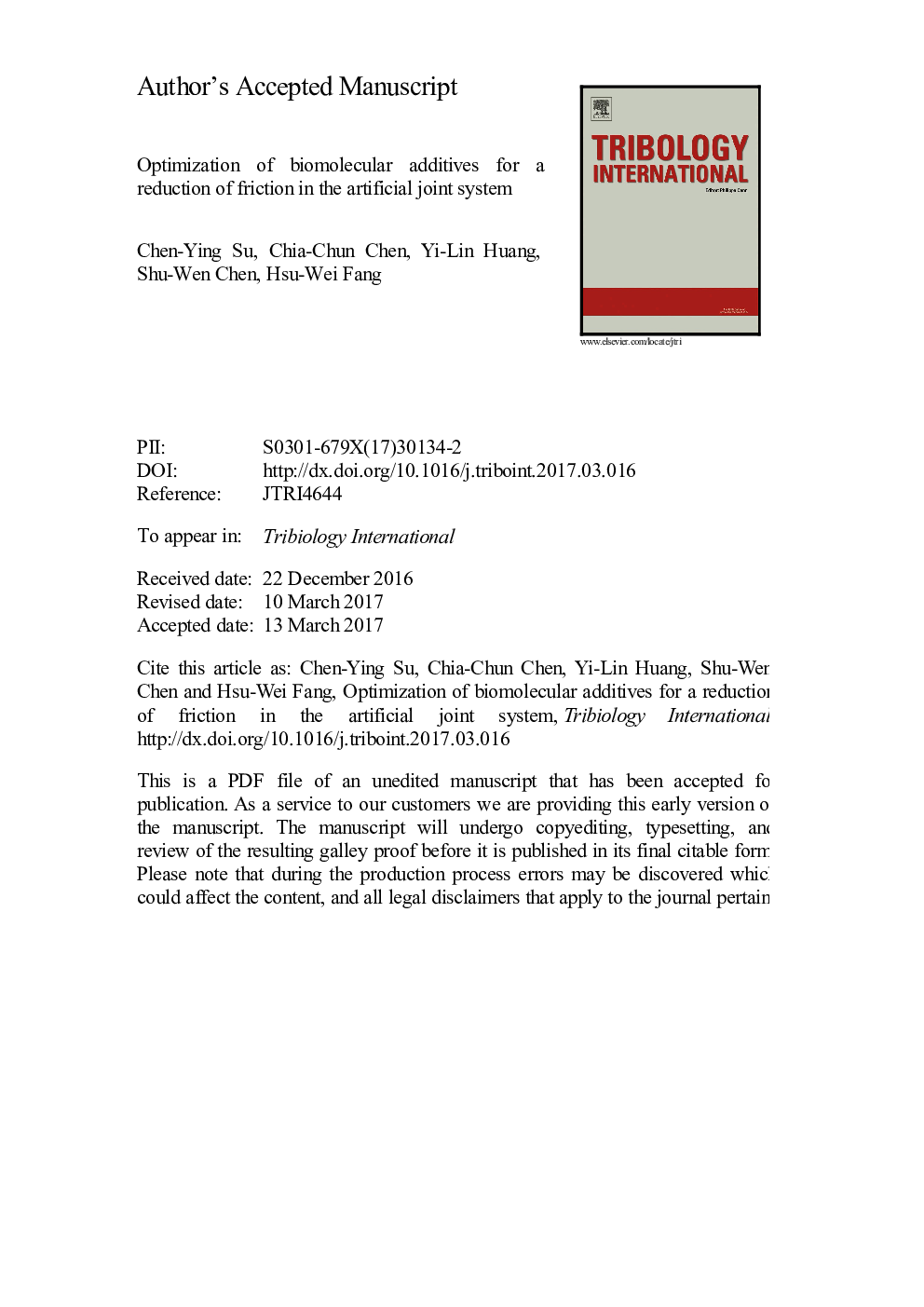| Article ID | Journal | Published Year | Pages | File Type |
|---|---|---|---|---|
| 4986051 | Tribology International | 2017 | 26 Pages |
Abstract
The main reason causing the failure of artificial joint replacement is wear particles-induced osteolysis. It is thought the suitable biocompatible lubricants may prolong the lifetime of artificial joints. We investigated the lubricating property of polysaccharides by sliding ultra-high molecular weight polyethylene pin over cobalt-chromium-molybdenum alloy disc. We tested the friction coefficient of carboxymethyl cellulose, alginic acid sodium (AA), and lamda-carrageenan (CRG), as well as their effects on the production of wear particles. We proposed a model of how certain polysaccharides can lower the friction coefficient by adsorption testing. The combination of AA and CRG show a synergetic effect to be a better lubricant in the artificial joint system.
Keywords
Related Topics
Physical Sciences and Engineering
Chemical Engineering
Colloid and Surface Chemistry
Authors
Chen-Ying Su, Chia-Chun Chen, Yi-Lin Huang, Shu-Wen Chen, Hsu-Wei Fang,
